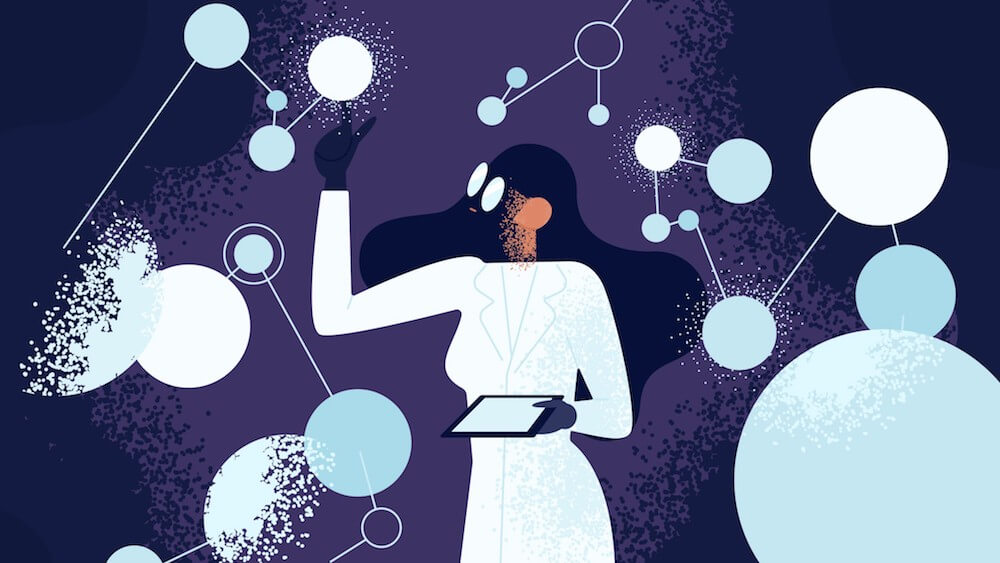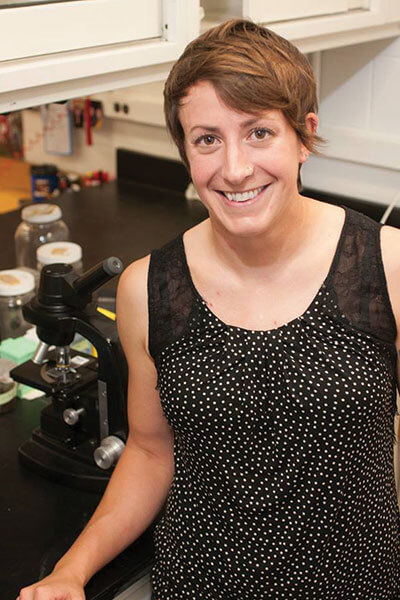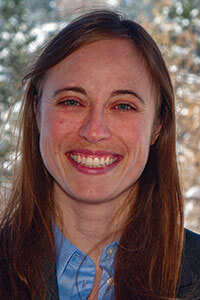
The “Request a Woman Scientist” database, created by 500 Women Scientists, includes 10,000 vetted woman scientists … and counting. (Adobe Stock/Good Studio)
Of the top 12 excuses given by conference organizers to explain why female speakers are underrepresented in — or absent altogether from — their meeting programs, the leading one is this: “We know we have no women. We are always looking for ideas. Could you please send some names?” That’s according to GenderAvenger, a nonprofit initiative aimed at making sure that women are part of the public dialogue.
For organizers of scientific meetings, the answer to that question, resoundingly, is yes. As of last month, there were almost 10,000 vetted women scientists, representing more than 170 disciplines and from 133 countries, listed in the “Request a Woman Scientist” database, created by 500 Women Scientists, a nonprofit, volunteer-led organization. The database is free to use and open to all, maintained by a small group who works daily to vet the submissions. Those submissions come in at a rate of 50-plus a day, according to Elizabeth McCullagh, an auditory neuroscientist and a post-doctoral fellow at the University of Colorado.

Elizabeth McCullagh came up with idea of the women in science database as a way of helping scientists like herself to identify other female scientists with whom they could collaborate.
McCullagh came up with idea of creating the database as a way of helping scientists like herself to identify other female scientists with whom they could collaborate, she said in an interview. Meanwhile, another member of the 500 Women Scientists network, Katarzyna Nowak, who holds a Ph.D. in biological anthropology, was thinking about the potential that a database of women scientists could have for mitigating what McCullagh called the “manel situation” — the persistence of all-male conference speaker line-ups. Nowak, a fellow at the Safina Center in Setauket, New York, and McCullagh joined efforts and the “Request a Woman Scientist” database was launched January 2018. An article published in the journal PLOS Biology in April, and co-authored by McCullagh, Nowak, and others, showed that among 1,200 participants surveyed about their experience, 11 percent reported that the database had led to them being contacted with requests for media interviews, peer review, panel participation, educational outreach, and professional/research connections.
‘Inclusive Meetings: Where to Start’
On the day last month when Convene spoke with atmospheric and climate scientist Angie Pendergrass, who is part of the national leadership team for 500 Women Scientists, she was headed to speak on climate change and precipitation at the University of Colorado Anschutz Medical Campus — an invitation that had come her way, Pendergrass said, because of the “Request a Woman Scientist” database.
As part of her work at the National Center for Atmospheric Research, Pendergrass organizes three meetings a year. Last year, she coordinated what she called “a meeting about meetings” — a two-day workshop designed to identify best practices in planning, holding, and evaluating inclusive scientific meetings. “A lot of scientific culture happens within scientific institutions, but we think meetings are kind of a leverage point,” Pendergrass said in an interview with the scientific journal Nature in April. “It’s one place where we’re creating a shared scientific culture.”
The workshop — “Being the ‘Change’ in Global Change Science: Promoting a Culture of Diversity, Equity, and Inclusion” — was co-organized by 500 Women Scientists, the Aspen Global Change Institute (AGCI), and the Earth Science Women’s Network (ESWN), and drew participants including male and female scientists, as well as diversity and inclusion officers to Boulder, Colorado, May 5–6, 2018. This past March, 16 of the workshop participants — with Pendergrass as the lead author — published “Inclusive Meetings” outlining recommendations for making scientific meetings inclusive. The 16-page online “Guide to Organizing Inclusive Scientific Meetings,” which includes three pages of links documenting bias and provides other resources, addressed inclusivity in three stages: planning a meeting, during the meeting, and assessing the meeting afterwards.

Angie Pendergrass
The guide begins with an introduction that sets out to help define and deconstruct the various biases that have led to inequitable representation at meetings. Understanding bias and having a plan to minimize its impacts is one of the most important things that meeting planners can do, Pendergrass said, since many powerful biases operate at an unconscious level. Even when planners aren’t making final decisions about who gets to speak, they can make progress toward equity and inclusion by collecting data about who gets to speak at meetings, Pendergrass said. According to the report, “Establishing baseline data now and monitoring future progress is critical. You can start by collecting and sharing data [about the inclusivity of] your meeting now, at the planning stages, during, and after the meeting, and continuing to collect and share it in the future. Sharing data creates accountability for yourself, and also for other groups and events around you.”
The document isn’t intended to be the last word on inclusive meetings but will be updated to incorporate feedback from meeting planners who share their successes and failures in their efforts to increase equity and inclusion, Pendergrass said. “It’s a work in progress.”
Other Resources
- The “Request a Woman Scientist” database, as well as the guide, “Inclusive Scientific Meetings,” are available at 500womenscientists.org, along with more than two-dozen additional databases, including women in political science, machine learning, and other fields.
- Women and other underrepresented speakers from a variety of fields also can be found in PCMA’s business events speaker database, Pass the Mic.
How a Text Group Went Viral
The organizers of 500 Women Scientists never set out to be a global grassroots organization — they were a small group of women who met in graduate school in Colorado and used group text as a way to stay connected as their careers led them in different directions. Following the 2016 U.S. election, as their discussions turned to their identities as women scientists and the growth of the public’s anti-science attitudes, the texts grew into an email thread. Friends added friends, who then added their friends, said auditory neuroscientist Elizabeth McCullagh, who leads a local chapter of the organization in Colorado and who is one of the creators of the “Request a Woman Scientist” database.
Then the group published an open letter, which pledged to, among other things, “work towards an inclusive society, where science and knowledge can be embraced and everyone has the opportunity to reach their potential,” and invited other women in science to sign it, hoping to have the support of 500 women. But when 20,000 women from around the globe signed on, McCullagh said, the founders decided that they should channel that momentum into something that could have long-lasting impact.
More Progress
National Institutes of Health Director Francis Collins’ decision June 12 to decline to speak at conferences that don’t include enough women in prominent speaking roles created a social media buzz among scientists — particularly women scientists, many of whom said “thank you.” GenderAvenger founder Gina Glantz says she has seen a big shift in the reactions from conference organizers when her organization points out that they lacked women speakers. “They used to get defensive or angry,” Glantz said. “Now they say: ‘We’ll do better.’” Here’s The New York Times report on Collins’ anti-manel statement.
Barbara Palmer is Deputy Editor of Convene.
